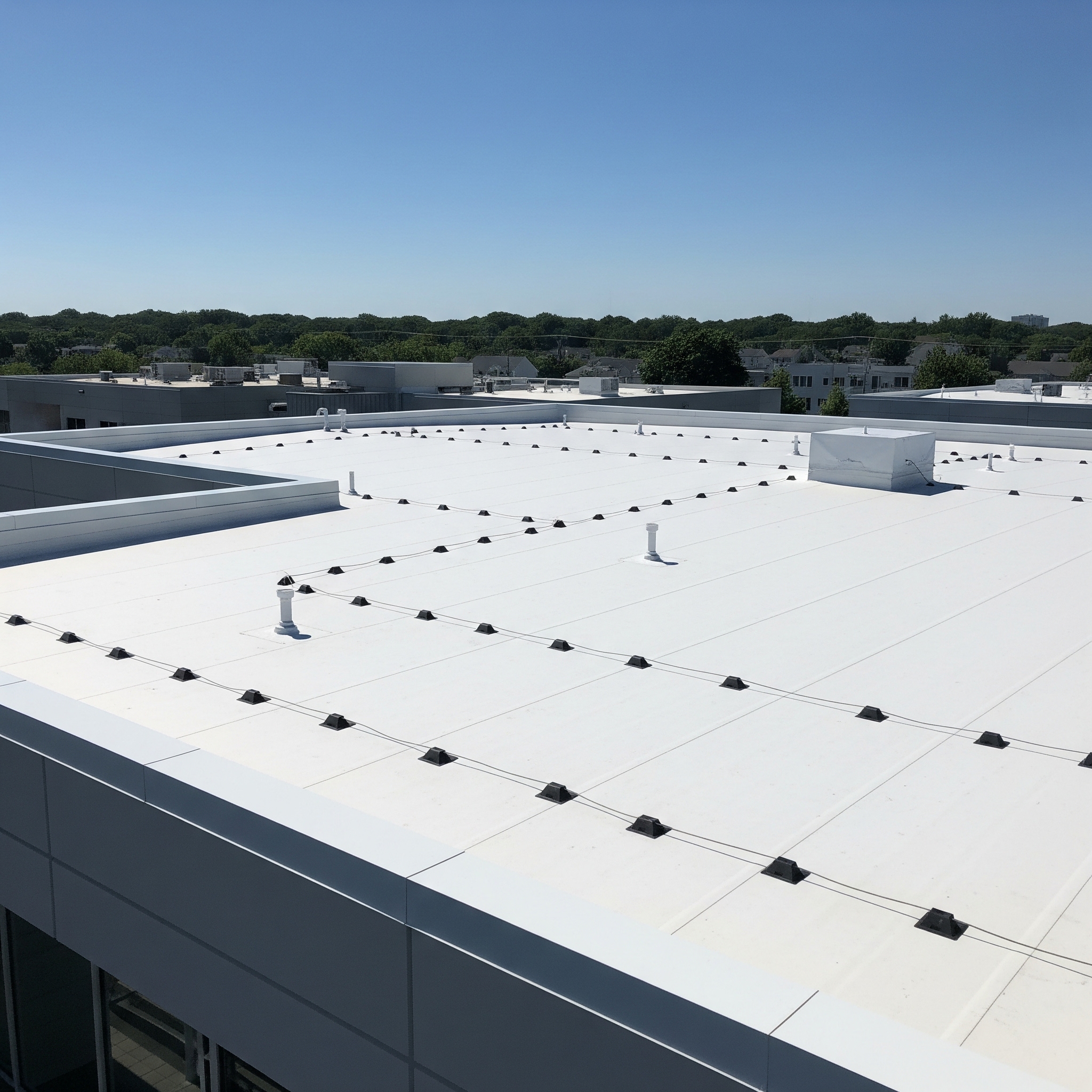Flat commercial roofs offer several advantages for large buildings, from easy equipment placement to cost-effective installation. But they come with a critical challenge: roof ponding—the accumulation of standing water that doesn’t drain within 48 hours after rainfall.
If left unaddressed, ponding water can cause major structural and financial damage. In this guide, Boundless Roofing & Chimney shares expert insights on how to prevent roof ponding on flat commercial roofs in New Jersey and protect your property year-round.
What Is Roof Ponding?
Roof ponding refers to pools of water that linger on a flat or low-slope roof long after a storm has passed. While brief water accumulation is normal, standing water that remains beyond 48 hours signals a serious drainage or structural issue.
Why Is Ponding Dangerous?
Repeated or chronic ponding causes:
-
Accelerated membrane breakdown from UV and moisture
-
Leaks as seams and flashings weaken
-
Added weight stress, risking structural sag or failure
-
Ice formation in winter, leading to cracks or ruptures
-
Algae, mold, and insect growth
-
Voided roof warranties from manufacturers
In New Jersey, where flat commercial roofs face frequent rain, snowmelt, and humidity, ponding is a high-risk issue that requires immediate attention.
Common Causes of Roof Ponding
-
Improper Slope – Flat roofs should have a minimum slope of 1/4 inch per foot. Poor design or installation can leave areas where water can’t drain.
-
Clogged Drains – Leaves, debris, and dirt can block internal drains or scuppers.
-
Sagging Roof Deck – Over time, structural settling or water damage can lead to low spots or depressions.
-
Insulation Compression – Wet or damaged insulation can shrink, changing the roof’s shape.
-
Faulty Flashing or Seals – When seams fail, water can intrude and compromise the roof’s structure.
How to Prevent Roof Ponding: Proven Solutions
1. Ensure Proper Roof Slope During Installation or Replacement
A professionally designed commercial roof should always include built-in slope, even if it appears flat. This is achieved with:
-
Tapered insulation systems
-
Slightly sloped decking
-
Strategic drain placement
If you’re planning a roof replacement or large repair, Boundless Roofing & Chimney ensures proper pitch is factored into the design.
2. Install and Maintain Effective Drainage Systems
Drains are your flat roof’s first line of defense against ponding. These include:
-
Internal drains (connected to underground piping)
-
Scuppers (openings in parapet walls)
-
Gutters and downspouts (on buildings with edges)
To keep your drainage working:
-
Clean debris at least twice a year (spring and fall)
-
Install leaf guards or strainers
-
Schedule inspections after major storms
-
Heat trace drains in winter to prevent ice blockages
Boundless Roofing & Chimney offers maintenance programs that include scheduled cleanings and performance checks for commercial drains.
3. Use Tapered Insulation Over Problem Areas
If your roof is already installed and ponding is occurring, adding tapered insulation during re-roofing or retrofit projects can redirect water away from low points.
Benefits of tapered insulation:
-
Improves water flow without rebuilding roof structure
-
Enhances energy efficiency
-
Extends roof life by reducing saturation and freeze-thaw cycles
Our team designs and installs custom tapered insulation plans for flat commercial roofs across New Jersey.
4. Reinforce Vulnerable Membrane Areas
Where ponding is unavoidable due to building shape or equipment placement (like around HVAC units), reinforced membranes or coatings can help.
Options include:
-
Silicone roof coatings, which resist ponding water and UV
-
Reinforced membrane patches in high-traffic or low-slope zones
-
Double-ply systems for added waterproofing
We can help evaluate these options during your inspection or estimate.
5. Regular Roof Inspections
Routine inspections help identify drainage issues before they become costly problems.
Your inspection should include:
-
Infrared moisture scans (to detect trapped water)
-
Visual checks for debris, membrane wear, and soft spots
-
Examination of flashing, drains, seams, and insulation
We recommend twice-yearly inspections for all commercial buildings and immediately after severe weather.
When to Call a Professional
Contact a commercial roofing specialist like Boundless Roofing & Chimney if you notice:
-
Puddles or water stains on the roof surface
-
Interior leaks after storms
-
Soft or spongy spots on the roof
-
Visible algae, dirt rings, or sagging areas
-
Clogged drains or overflowing scuppers
📞 Call us now at 973-960-7921 or
📩 Schedule a free roof ponding inspection
We serve all of New Jersey with reliable commercial roofing repair, replacement, and maintenance solutions.
Final Thoughts
Ponding on flat commercial roofs isn’t just a minor nuisance—it’s a warning sign of deeper problems. By acting early, inspecting regularly, and working with experienced professionals, you can avoid structural damage, protect your building’s value, and save thousands in repairs.
At Boundless Roofing & Chimney, we’ve helped hundreds of New Jersey business owners stop ponding in its tracks with smart drainage design and proven roofing techniques.
Want to Learn More?
Ask us about:
-
Customized tapered insulation systems
-
Drain upgrades for existing flat roofs
-
Roof coatings that resist ponding
-
Annual maintenance contracts with ponding prevention
📞 Call 973-960-7921 or
📩 Get your free commercial roof estimate today

